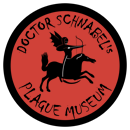What did they do in times of plague: the Cities, the Clergy, the People, the Doctors?
1. What the Cities did
Close the city

Build Plague Hospitals

Isolate suspected and confirmed patients

Hospitalize the sick

Hire people

Have the dead buried

Burn their stuff

Make a lot of smoke

Issue regulations

Punish the violators

Kill the animals

Hire more people

Remove the bodies

Build a church

2. What the Clergy did
Pray

Organize a procession

Perform the last rites

Attend to the sick

Bury the dead

Die

3. What the People did
Die

Flee the city

Find a scapegoat

Live on

4. What the Doctors did
When they were physicians: feel the pulse and inspect urine

Prescribe medicines

When they were surgeons: lance buboes

Let blood

Research

Flee the city

When they were charlatans: sell potions

What did the doctors wear? Find out in our Costume Department.
HJMattie, March 02, 2022


